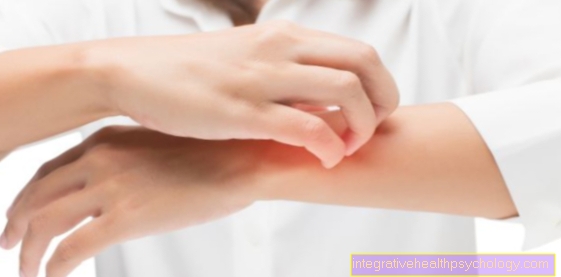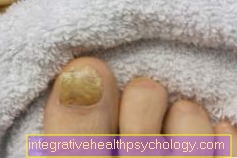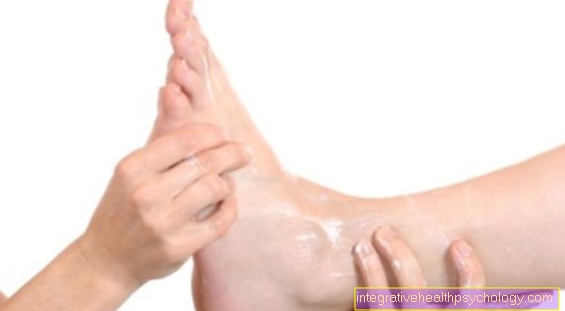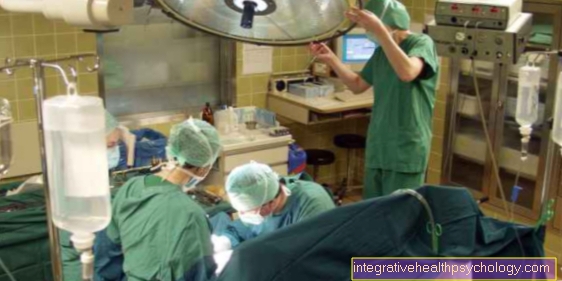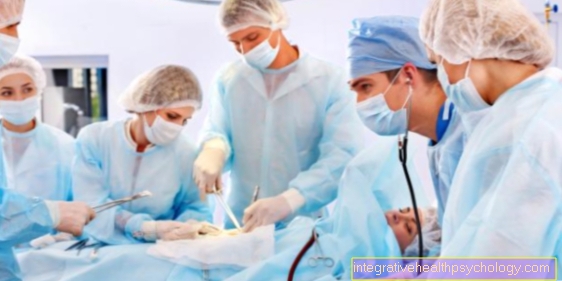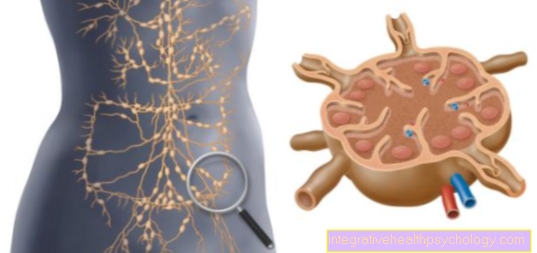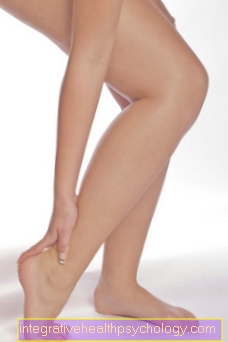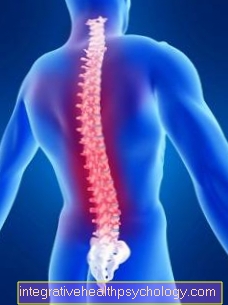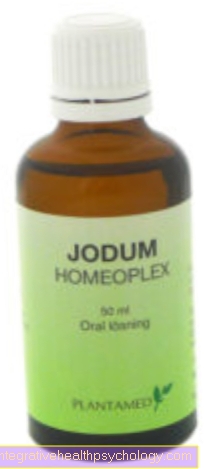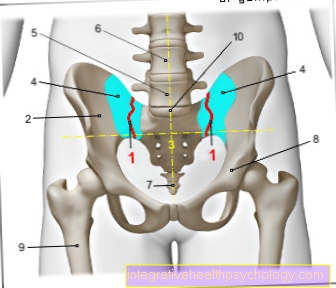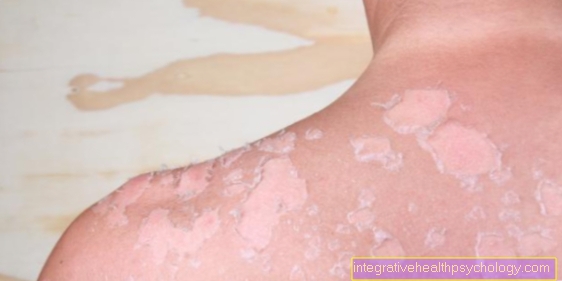Initial stage of athlete's foot
introduction

With the classic athlete's foot (Tinea pedis) is the most common fungal disease in humans. The pathogens are mostly Trychophyton rubrum or to Trychophyton mentagrophytes. It is transmitted through direct contact between the pathogen and the skin. It is sufficient that the pathogen is on the skin flakes of other people who are currently suffering from athlete's foot.
For more information, see the main article athlete's foot.
Initial symptoms
The first initial symptoms are usually expressed as increased itching (Pruritus) in the affected area. A distinction is made between three different types of athlete's foot based on where they occur:
- Either the fungus appears between the toes (interdigital type), it occurs particularly frequently between the 4th and 5th toe
- on the sole of the foot (Squamous-hyperkeratocic type). The medical term does not describe the place of occurrence, but the appearance.
- on the arch of the foot or the side edges of the foot. This is the vesicular-dyshidrophic type, also here only the appearance and not the place of occurrence is described by the medical terminology.
In all three types, the itching is in the foreground; there is also reddening and flaking of the affected skin. Blisters and pustules can also develop. Small tears through all layers of the skin (Rhagades) occur just like the increased formation of cornea (Hyperkeratosis) rather seldom at the beginning of the disease, but mostly only in the further course. When handling soap, one should be more careful in the area of the area affected by athlete's foot, as contact with soap can cause severe stinging.
Read more on this topic at: Signs of athlete's foot and how contagious is athlete's foot?
Diagnosis
In some cases this is sufficient Eye diagnosis, to secure the pathogen and, if necessary, to confirm the differential diagnosis, the pathogen detection microscopic or through Cultivation take place on appropriate culture media. The athlete's foot is from bacterial diseases, especially if the spaces between the toes are affected.
therapy
At an incipient infestation by athlete's foot, initially Anoint that are effective against many types of fungi, these are so-called Broad spectrum antifungal drugs such as ointments that contain the active ingredient terbinafine. Only in the case of a more pronounced and more advanced infestation is the administration of medication that can affect the entire body and are therefore swallowed possible. As a supporting measure here are the Disinfection of the stockings and shoes and the elimination of risk factors.
Risk factors
Since mushrooms are particularly comfortable in humid and warm places, people who are strongly under Sweaty feet suffer from athlete's foot more than others. People at one Defect of the immune system suffer such as congenital immunodeficiency (SCID) or by a chemotherapy induced immunodeficiency or by a HIV infection Triggered immune defects generally have a harder time asserting themselves against all kinds of infections and are therefore more likely to suffer from athlete's foot. Special hygiene is urgently required here, not only when dealing with athlete's foot.
Another important factor is that Blood flow to the foot. Therefore, any habits or illnesses that lead to reduced blood flow to the foot are automatically predisposing factors for suffering from athlete's foot. The harmful habits include here Smoke, which generally has a damaging effect on the blood vessels, not only on the leg, and a Sedentary lifestyle, because the foot is only supplied with reduced blood flow. The diseases that affect blood circulation include the peripheral arterial disease (PAOD), which on the floor of a arteriosclerosis can arise and the Diabetes (Diabetes mellitus). Both diseases lead to an insufficient supply of the foot, as the diameter of the blood vessels is restricted. Of course, the small vessels are particularly badly affected by this.
prophylaxis
It is a good and effective prophylaxis Wearing flip-flops in public swimming pools and showers. The flip-flops reduce contact with potentially infected skin flakes from other bathers to a minimum.
Also the choice of the matching footwear leads to a reduction in the occurrence of athlete's foot. By a good ventilation The feet do not sweat as much any more and thus the athlete's foot is deprived of a good breeding ground for its development. Also the choice of right stockings, which can also absorb moisture, for example cotton, and changing it regularly is a good prophylaxis.
If you are prone to athlete's foot, you should also make sure that you especially after bathing and showering Thoroughly dry the spaces between the toes and generally to a good foot hygiene respect, think highly of. In general, you should ensure that your feet are well ventilated and that your skin is dry, so it is also suitable as a prophylaxis from time to time barefoot to go. This not only stimulates blood circulation, but also prevents foot sweat from collecting.

